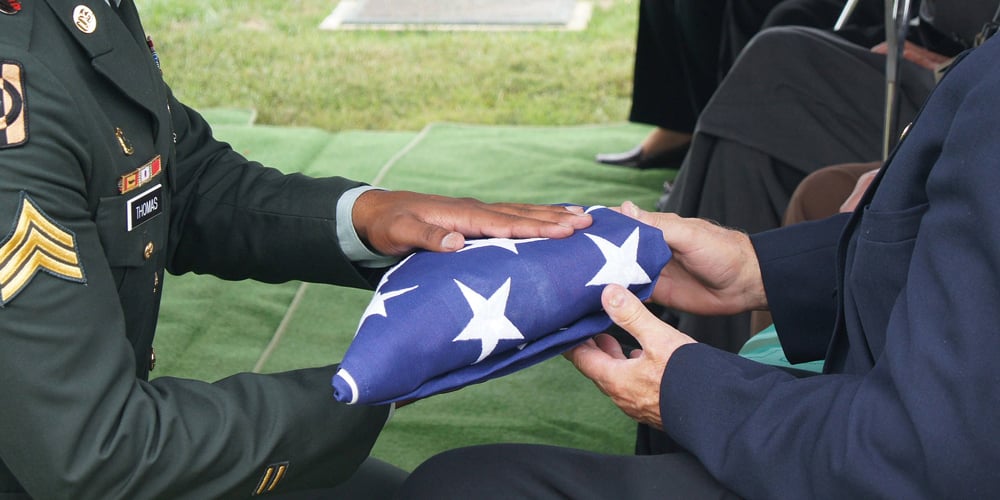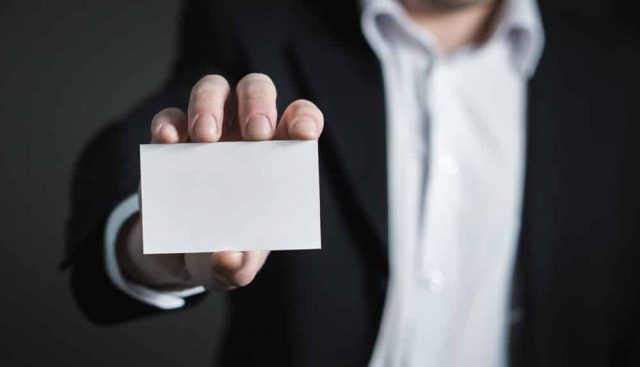Sign up for the Family Tree Newsletter Plus, you’ll receive our 10 Essential Genealogy Research Forms PDF as a special thank you!
Get Your Free Genealogy Forms
"*" indicates required fields

Have you ever daydreamed about doing genealogy all day long—and getting paid for it? Some people do make a living as traditional genealogists, whether working for a firm or independently. But I’ve also heard, from time to time, about other occupations that require family history research skills. These sounded like dream jobs; I wondered how real they were. So I tracked some of them down.
In this article, you’ll meet a half-dozen professional genealogists who work under a variety of job titles. Many of them do heir-searching at least part-time. Beyond that, they’ve all developed skills that take genealogy in a direction all their own.
By and large, these professionals bring many of the same sleuthing skills to their work that you do when chasing ancestors. They just apply them differently: in pursuit of the living, in pursuit of an unknown person, or to right a wrong. However distinct their niches, the hard-won tips they share can inspire and inform your own (not-so-billable) hours of ancestor searching.
ADVERTISEMENT
1. Private Investigator
Amy Urman of Tucson, Ariz., can trace her love of mysteries to childhood. “I think it all started with Harriet the Spy in fourth grade, which led me to Nancy Drew,” she says. “I always have to know why.”
She has been a private investigator since 2003 when, as a law librarian, she heard attorneys complaining they couldn’t find people. Urman knew she could: She was an experienced genealogist. But she couldn’t do that for them without a license, so she became a private investigator (PI) instead. Now she works independently through Nosy Wilma, LLC.
“I hunt the living and the dead,” explains Urman (who also does professional genealogical research). “I find out people’s whereabouts for lawsuits and heir-searching.” For example, her clients often include attorneys trying to secure mineral and water rights from a property’s living heir.
ADVERTISEMENT
Whether doing PI work or genealogy consulting, Urman says she starts the same way: making a plan. “What do I know? What am I looking for? When it’s a person I have to find, I ask a lot of questions,” she says. “People usually know more than they think. You have to ask good questions, listen to responses, and figure out how to follow up to get the information you need.”
To find the living, Urman looks up records local to their last known locations, such as deeds, lawsuits, directories and even licensing boards. She uses people-finding databases, but with caution—the sources can be old, or contain unreliable data.
Like genealogy, her work is made easier by having access to the right databases—and the knowledge of how to search them. And as a licensed PI, she can access information that the general public can’t.
Does her work ever get, well, lively? “I’ve re-possessed racehorses and cars and cattle,” she recalls. “Tracking the racehorse was fun; I had to learn the racing circuits.” She has spied on people, followed them home, and struck up conversations with them in public places. She’s been chased, both on foot and in her car. “Once I had to haul myself over a wall,” she calls. “I had to call my daughter to bring me a ladder to get back out.”
Urman loves finding answers in unexpected places, bringing people to justice, and reuniting long-estranged loved ones. “But the biggest reason I like my job is that it’s never the same. This afternoon I’m researching a TV show, and at an archive. Tomorrow I might be at an agency pulling records. I just never know.”
Tip: Make a plan. Determine what you want to know, and ask a lot of questions.

2. Investigative Genetic Genealogist
In 2014, Jennifer Moore’s husband, an adoptee, began searching for his birth family through DNA testing. Already a genealogist, Moore learned how to do unknown parentage research so she could help him. Hundreds of cases later, she paired this satisfying new skill with her background as a legal assistant to join a cutting-edge professional field: investigative genetic genealogy.
“I use DNA profiles from crime scenes, along with investigative genetic genealogy techniques, to determine how closely related two people are,” explains Moore, who lives in Emporia, Va., and co-founded Innovative Forensic DNA. “This methodology produces leads to the identity of unknown subjects.”
Moore’s experience working unknown parentage cases is foundational to solving DNA mysteries. Many genetic genealogists who take DNA tests can use their own family trees to figure out how they’re related to their matches—but adoptees can’t. Neither can Moore when working with an unidentified DNA sample from a crime scene.
On a daily basis, Moore analyzes clues from DNA matches and their family trees to shed light on unknown identities. She also does traditional genealogical research to confirm and extend matches’ family tree data. Census records and obituaries are particularly helpful for reconstructing family trees, she says. She requires a complete and accurate tree to ascertain all possibilities for a subject’s identity.
She finds the work satisfying on multiple levels. She wants to help victims “gain justice through some of the most devastating times of their lives, and to ensure the right persons are held accountable,” she explains. “The best part of my job is helping others.”
But Moore also enjoys the challenges DNA presents: “I have a particular interest in the toughest DNA cases, like matches who share relatively low centimorgan counts, pedigree collapse, endogamy, different ethnicity and recent immigration.”
Moore champions ethical and confidentiality standards for both professional and everyday researchers. “I come from the adoption world; I believe adoptees have a right to know who their biological families are,” she says. “But I respect that some birth families are not happy to be found.” She encourages respecting birth families’ privacy if they choose not to pursue a relationship.
And when it comes to law-enforcement using DNA in criminal investigations, Moore also respects a test taker’s privacy. “Within the scope of the law, that should be the individual’s choice,” she says.
Tip: Analyze DNA clues alongside traditional genealogical research.

3. Historic Preservationist
A few years ago, professional genealogist LaDonna Garner went back to school. “I wanted to do something that would support genealogy, and I’m a hands-on person,” she says. “So I got a master’s in historic preservation.”
From her rural farm near French Village, Mo., Garner runs Leafseeker Consulting, which supports the preservation and recording of local history.
In addition to taking genealogy clients, she restores cemeteries, compiles home and business histories, and plays the roles of unknown African Americans in historical reenactment programs.
Sometimes her clients hope to get a building listed on the National Register of Historic Places. “If you want a building to be named a historic site, you have to build a lineage for that home, and that all gets done in a particular format for the historic preservation office on a state level,” Garner explains. “Building a lineage for a building is just as intense as building one for a person.”
In fact, she uses the same skills and records for both. “Often the stories come together. It’s the story of the people and the house, not one or the other,” she says.
Genealogists will recognize many of the documents Garner uses in her work. Residents in a home paid taxes on the real estate and property (or failed to do so), leaving behind documentation. “The tax office is my friend!” she says. “I use maps and county records that aren’t going to be online.”
These documents also shed light on how the house itself has evolved. “Looking past a deed, the original documents may reveal the history of the house as it started out,” Garner explains. “Then maybe [the residents] built a bigger house or added a barn. Or maybe they experienced a fire and had to rebuild.”
This wider approach to history has led her back to where she started: her own family tree. Garner’s family has been in Missouri for eight generations, where some of its members were enslaved. African American research in Missouri is challenging, she says. Historical evidence of many black individuals and communities doesn’t survive—or was never created in the first place. But she has slowly discovered traces of them while researching local industries, cemeteries and neighborhoods.
“It’s neat to see how everything evolved together, how the different ethnicities interacted, even when they seemed to be so segregated,” says Garner. “The varied ethnicities on my family tree make a little more sense in the context of all the local history. And gradually I find these other records that give more insight into my family.”
Tip: Take a wide approach to history, and consider the historical places important to your ancestors.

4. Military Repatriation Expert
Over the years, professional genealogist Debbie Mieszala of Libertyville, Ill., has worked on a lot of fascinating projects, including adoption cases. Nowadays, however, she almost exclusively focuses on one type of work: repatriating military remains. “It’s a dream job,” she says. “This is now my primary work.”
Military repatriation cases involve “doing genealogical research for the military to locate relatives of service members missing in past wars,” she explains. Her task is usually to locate living next-of-kin so Army’s casualty office can establish contact with them. Then, she finds relatives who can contribute DNA samples that will help identify remains. (Learn more about military repatriation.)
Mieszala is currently working on several WWII cases: service members who died or went missing in the 1940s. Each service member had emergency contacts listed (often, next-of-kin), but many of them have since passed away. “I have to build out their family trees. If that soldier had 10 siblings, I have to find out who’s the oldest and who’s still alive,” she says. “It’s very similar to inheritance.”
Paperwork from the service member’s file may give Mieszala vital clues. She watches for original emergency contact information, correspondence with relatives, change-of-address notices and even dental charts (which often have the soldier’s state of birth). If what she’s sent doesn’t give her enough information, she may request additional documents.
“At times I’ve had to go back to the 1700s and work my way down to find family members who don’t even know this person existed,” she says. In this way, Mieszala often uses the “FAN club principle,” a term coined by Elizabeth Shown Mills to describe researching the subject’s friends, associates and neighbors (“FANS”).
“I might find myself looking at an in-law’s or a grandchild’s Facebook page to see if Grandma’s still alive,” Mieszala says. “It’s the same principle we would use for a census record: We’ve got to look around a person to find them.”
Mieszala may never hear about the outcome of any given case; it sometimes takes years to close them. “Once in a while I’ll see in the news that one of my soldiers is coming home. Their remains are finally being buried,” she says. “That’s really neat.” One time, a relative thought to invite her to the internment. “I put dirt on my soldier’s grave,” she recalls. “It was pretty amazing.”
Tip: Look around a person to find them (i.e., research your ancestors’ friends, family members and community).
5. Heir Searcher
In the early 1990s, Michael Strauss was a full-time truck driver and amateur genealogist. Then his career took a dramatic U-turn. “A prestigious law firm contacted me and asked me to, essentially, do genealogy,” he says. “I had to find and document the heirs-at-law for an estate.” He took two weeks of vacation time to give it a try—and never went back to driving.
Today, Strauss contracts as an independent heir-searcher for attorneys, estate administrators and courts. His job is to track down all qualifying heirs of an estate and provide evidence for their relationship to the deceased.
“The research methodology is the same as genealogy,” Strauss—who also does professional genealogy work—says. “I have to research the family thoroughly. I use census records, vital records, cemetery records, obituaries—all mainstream records. They want proof the family members belong in the family.”
Though a Utah resident now, Strauss’ work mostly comes from the East Coast, where he lived previously. After thorough research, he may report findings in a written affidavit or give oral testimony as an expert witness.
“I was nervous the first few times I testified,” he admits. “The attorney said to just tell them what I did. I got comfortable quickly because I got excited to talk about what I found. I looked at it like it was my own family.”
Strauss is just finishing a case in Virginia that required a massive amount of research. “In Virginia, you have to keep looking for heirs until you find living people,” he explains. The decedent had just two heirs on his maternal side: two second cousins once removed. But the paternal side in that case had 123 heirs, with varying proximity to the deceased. His research filled four accordion-style legal folders, and extended back nearly 200 years to the decedent’s great-grandparents.
For others attempting to fully document their families, Strauss has this advice: “Be diligent and document all family lines. Don’t just quit at one. If a line gives you trouble, go to another. Maybe that one can open up the lines you have trouble with.”
For him, thoroughness is essential. He has to swear that he has done a due diligence search in every case. “Have I searched every record possible? I have to be able to answer yes,” he says.
Tip: Be diligent and thoroughly document every family line.

6. Citizenship Reclamation Specialist
New York resident Caitlin Hollander co-owns a firm that specializes in Jewish genealogy and heritage research. Many of her clients need heir-searching or traditional genealogical research services. Beyond this, she and her partner, Michael Waas, have developed a fascinating and little-known branch of their business: helping people reclaim ancestral citizenship.
“Reclamation of citizenship applies to both Jewish and non-Jewish research,” explains Hollander. “My area of expertise is Ashkenazi [Eastern European Jewish] research. So in the citizenship realm, I help people reclaim German citizenship that was revoked by the Nazis, along with ancestral citizenships in Poland and other countries in the region.” To complement Hollander’s focus on Ashkenazi ancestry, Waas focuses on Sephardic Jewish research, working with cases in Spain and Portugal.
Hollander doesn’t just help other researchers—she’s also working on her own citizenship reclamation case. Her grandfather was born in Leipzig, Germany, in 1937. “But even though I can trace them in Germany back to the 1700s, my great-grandmother’s German citizenship was revoked,” she says. “I have the actual Nazi records showing its revocation, and I have supporting evidence in her later application for US citizenship. Seeing her nationality written there as Stateless, last of Germany lit a fire under me.”
Hollander’s research often goes back to a client’s grandparents or great-grandparents. “I have to build the family tree back and verify they fit the reclamation requirements for that country,” she says. “Each country is different, and so is every family’s situation. I need official documents. I may have to write something up and have it translated into the appropriate language.”
Citizenship reclamation efforts aside, Jewish genealogy can still be incredibly challenging. When searching for Jewish ancestors overseas, Hollander has learned to cast a wide net for indirect evidence when more relevant records don’t exist anymore. “Sometimes I’m dealing with areas where there genuinely haven’t been any records for over 100 years,” she says. In one area of Poland, all of the vital records were gone, but school records for Jews were there. I looked to see if a father’s signature on a school register matched the other one I had.”
She finds it essential to explore every existing local historical record set. For example, one area of Poland had total vital record loss—but school records for Jews survived. She searched school registers for one man’s signature, testing it against another document she had.
This kind of work is not easy emotionally. Hollander frequently encounters graphic descriptions of atrocities committed against her clients’ families. “I do have to step away from it at times,” she admits. “But there’s a lot to be said for giving the victims back a voice. A lot of them have no direct descendants: Some families were entirely wiped off the map. It’s so rewarding to help a family who was victimized by a government to get just a little piece back—their citizenship—even if it’s just symbolic. It’s a type of genealogy where you take one step beyond pure research and turn it into action.”
Tip: Cast a wide net and explore all records.
A version of this article appeared in the July/August 2020 issue of Family Tree Magazine.
Related Reads
ADVERTISEMENT







